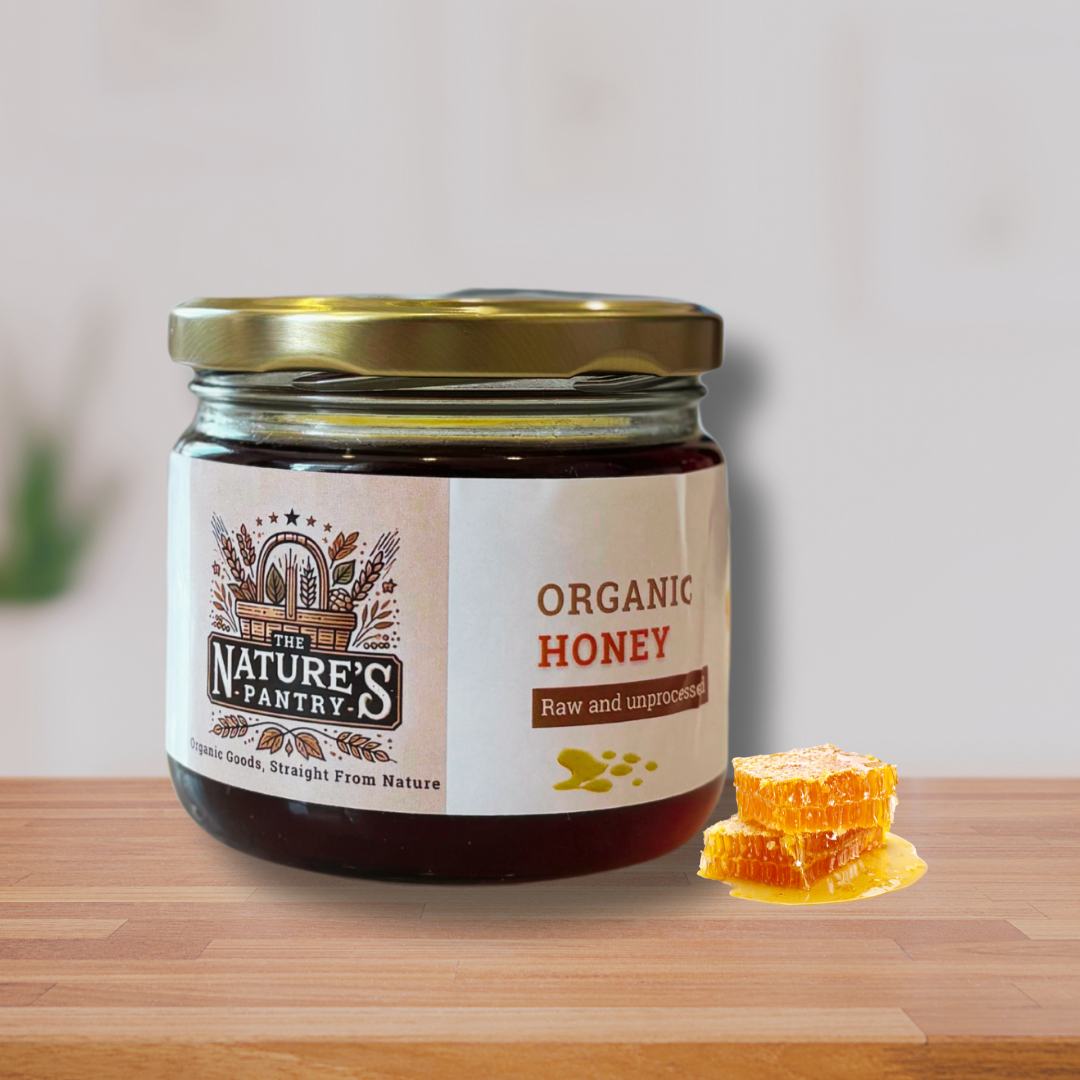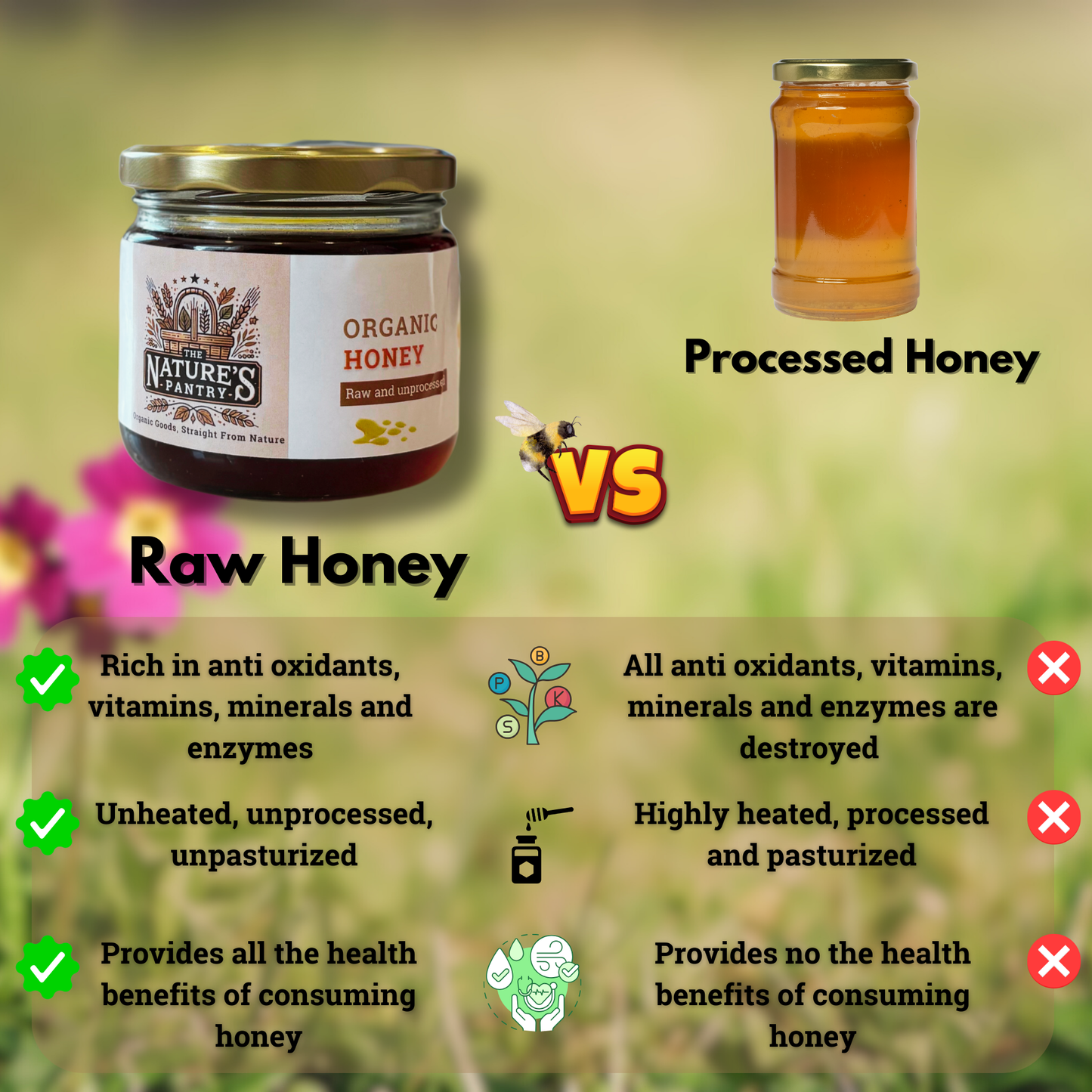Unlocking the Secrets of Natural Honey: A World of Flavor and Color
Share

Honey, nature’s sweet nectar, is as diverse as the environments it comes from. While bees are the key players in natural honey production, several factors—from the type of bee to the floral source and season—influence its flavor, texture, and color. Let’s dive into the fascinating variations in naturally made honey and discover why each type is unique.
1. The Role of Bee Species
Different species of bees create honey with distinct characteristics:
- European Honeybees (Apis Mellifera): The most common honey producers, their honey flavor and color vary based on the flowers they visit. This is the source of most commercial honey.
- Stingless Bees (Meliponini): Their honey is tangy and runny due to higher moisture content and light fermentation.
- Bumblebees: Known for producing honey in small amounts, usually consumed within their colonies.
Each bee species imparts its unique touch to the honey they produce, offering a variety of options for honey enthusiasts.
2. Floral Sources: Monofloral vs. Wildflower Honey
The flowers bees visit significantly impact the honey’s flavor and color:
- Monofloral Honey: Derived primarily from a single type of flower, such as clover, acacia, or manuka. Each variety has a distinctive taste and hue.
- Wildflower Honey: A blend of nectar from various wildflowers, resulting in a complex and rich flavor profile.
At The Nature’s Pantry, we proudly offer Wildflower Honey, which captures the essence of nature’s diversity. Its flavor is dynamic and depends on the flowers blooming in a given season.
3. Color Profiles of Honey
The color of honey varies widely, reflecting its floral origins:
- Light Honey: Often delicate and mild in flavor, light-colored honey comes from sources like acacia or clover flowers.
- Dark Honey: Richer and more robust in taste, dark honey is typically derived from sources like buckwheat or wildflowers.
Our Wildflower Honey is a beautiful amber hue, leaning towards a darker tone. This richness in color hints at its bold, complex flavor—a perfect choice for those who love a deeper, earthy sweetness.
4. Seasonal Influences
The time of year impacts the nectar available to bees, shaping the honey’s flavor and composition:
- Spring Honey: Lighter in color and flavor, created from early blooms like dandelion and fruit blossoms.
- Summer Honey: Medium-bodied with a balanced flavor, drawn from a variety of midsummer blooms.
- Autumn Honey: Darker and richer, crafted from late-blooming flowers such as goldenrod.
Wildflower Honey from The Nature’s Pantry evolves with the seasons, offering a unique taste in every batch.
5. Honeydew vs. Floral Nectar
While most honey comes from floral nectar, some bees collect honeydew—sweet secretions from insects found on trees. This produces honey that is:
- Forest Honey: Often darker, less sweet, and rich in minerals.
- Pine Honey: Common in Mediterranean regions, it has a distinct, resinous taste.
Although our focus is on floral Wildflower Honey, understanding these variations showcases the versatility of natural honey.
Why Choose Wildflower Honey from The Nature’s Pantry?
Our Wildflower Honey captures the authentic essence of nature. Its dark amber color and complex flavor profile make it a versatile addition to your pantry. Whether drizzled over pancakes, stirred into tea, or enjoyed straight from the jar, it offers unparalleled purity and taste.
The Sweet Takeaway
Natural honey’s variations are a testament to its connection with the environment. From floral sources to seasonal changes, each jar tells a story of nature’s bounty. At The Nature’s Pantry, we celebrate this diversity with our premium Wildflower Honey. Embrace its bold flavor and let it sweeten your life naturally!
Ready to savor the richness of Wildflower Honey? Visit The Nature’s Pantry today and experience the taste of nature’s finest!



